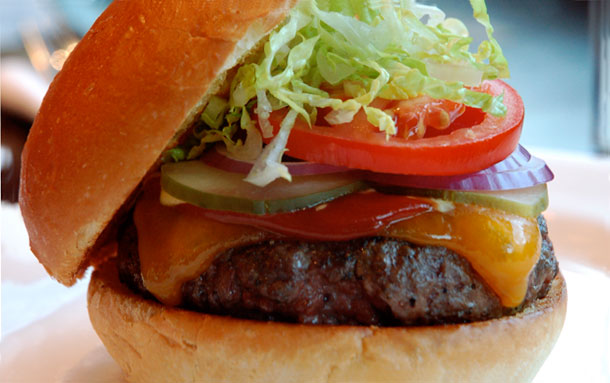Last fall, I opened a restaurant called Westend Bistro. It’s located in the Ritz-Carlton Hotel in Washington, D.C., at 22nd and M Streets—a part of D.C. that’s growing very quickly, with new apartment buildings going up left and right. This burgeoning neighborhood needed a great neighborhood restaurant, so I set out to create one; I wanted it to be a comfortable spot that people would come back to again and again. My sous-chef and I decided to make it an American bistro. And of course any great American bistro needs to have a great burger.
In developing that burger, my research took me to a couple of places that might seem unexpected: McDonald’s and Burger King. I didn’t grow up in the U.S. and had never really visited these chains before, so I wanted to see what they do with their burgers to make them so popular.
Just looking at the basic burgers at each of these chains—particularly the Big Mac—showed me a couple of very key things: First of all, the burgers are a perfect size. You can grab them in both hands, and they’re never too tall or too wide to hold on to. And the toppings are the perfect size, too—all to scale, including the thickness of the tomatoes, the amount of lettuce, etc. In terms of the actual flavors, they taste okay, but you can count on them to be consistent; you always know what you’re going to get.
After sampling these burgers and, er, digesting the information we had gleaned, we found a great-quality meat from a local farm and devised the best ratio of fat to flesh (still our little secret!). We were very careful with the thickness of the patty—if it’s too thin you can’t get it medium rare, and if it’s too thick, it will be dry on the outside and raw on the inside. I also wanted it to be small enough that, like the McDonald’s patty, it would fit in the bun with everything else. Sometimes “upscale” burgers are so massive, and piled so high with toppings, that I have no idea how to eat them. And the chefs never put the pickle in the burger; when I get one on my plate I always wonder what I’m supposed to do with it. So at Westend, we serve the burger on warm, toasted challah buns (for their golden color and buttery, egg-like flavor) with a thinly sliced tomato, some shredded lettuce, a pickle, ketchup, and mustard already on the burger, so you can just pick it up and get that perfect bite every time. To me there is something about these ingredients that creates a harmonious combination, and the textures also work very nicely together: You get crunch from the pickle and lettuce and softness from the ketchup and tomato.
Our challenge now is to keep a very close eye on the mise en place, because if one cook changes even a little detail of one of the key ingredients—the width of the tomato slices, the amount of mustard on the bun—the harmony of these burgers is lost.




 Pinterest
Pinterest


